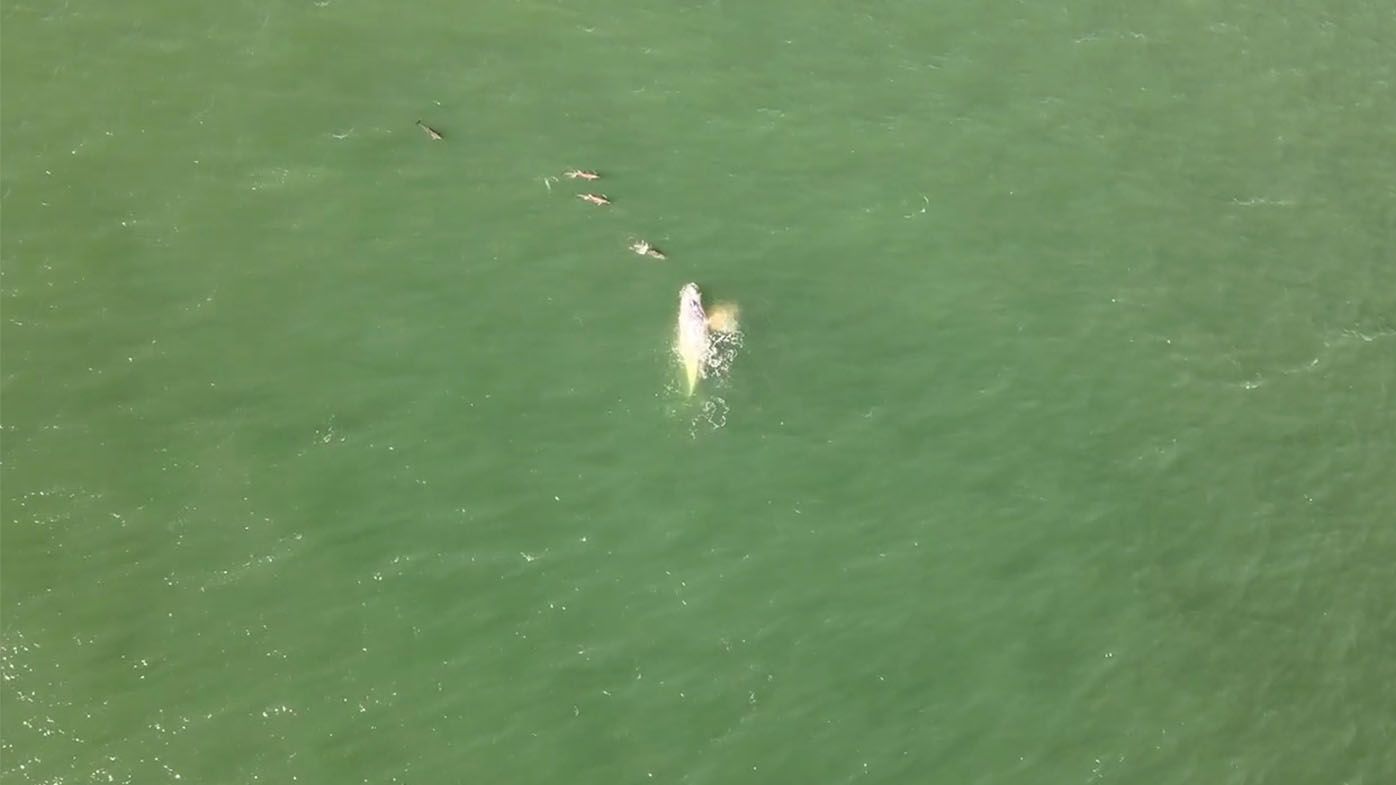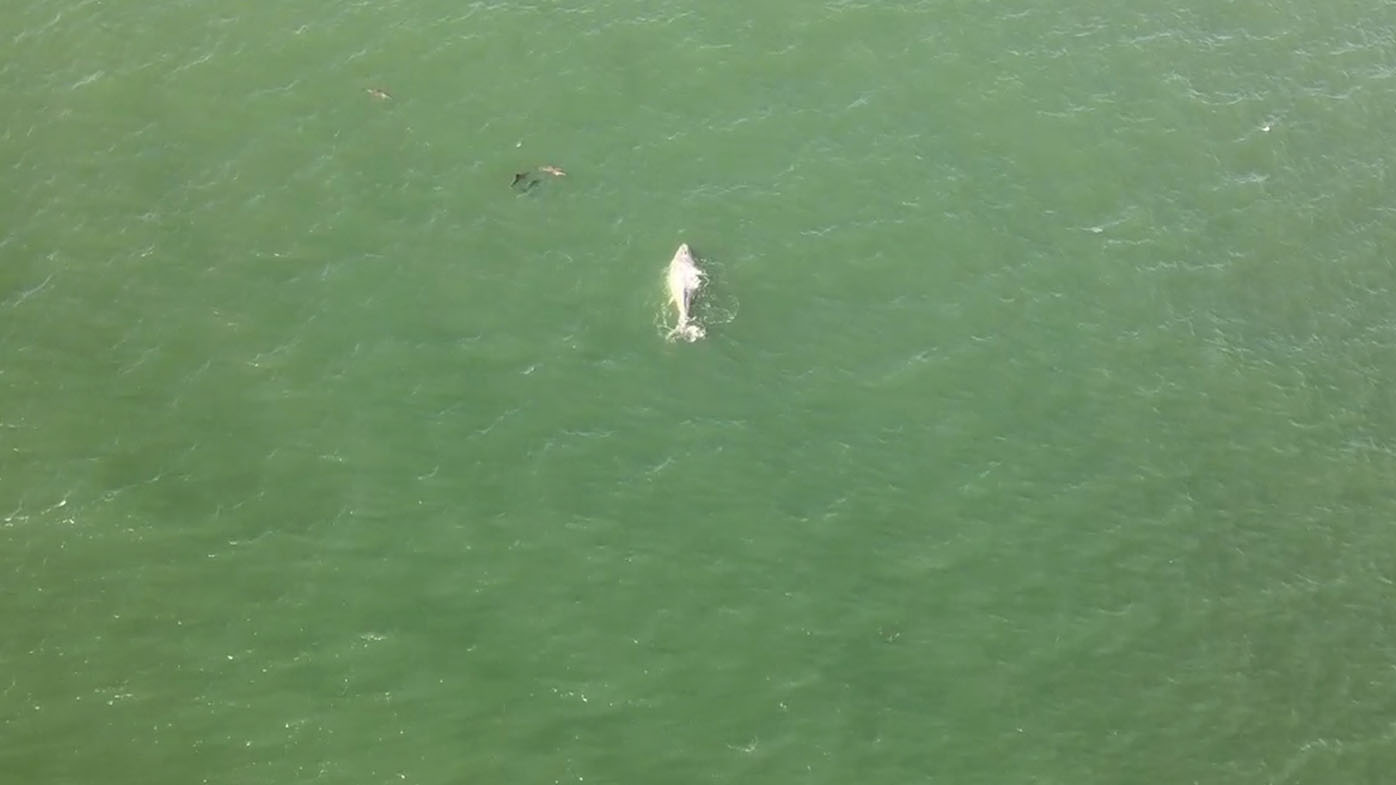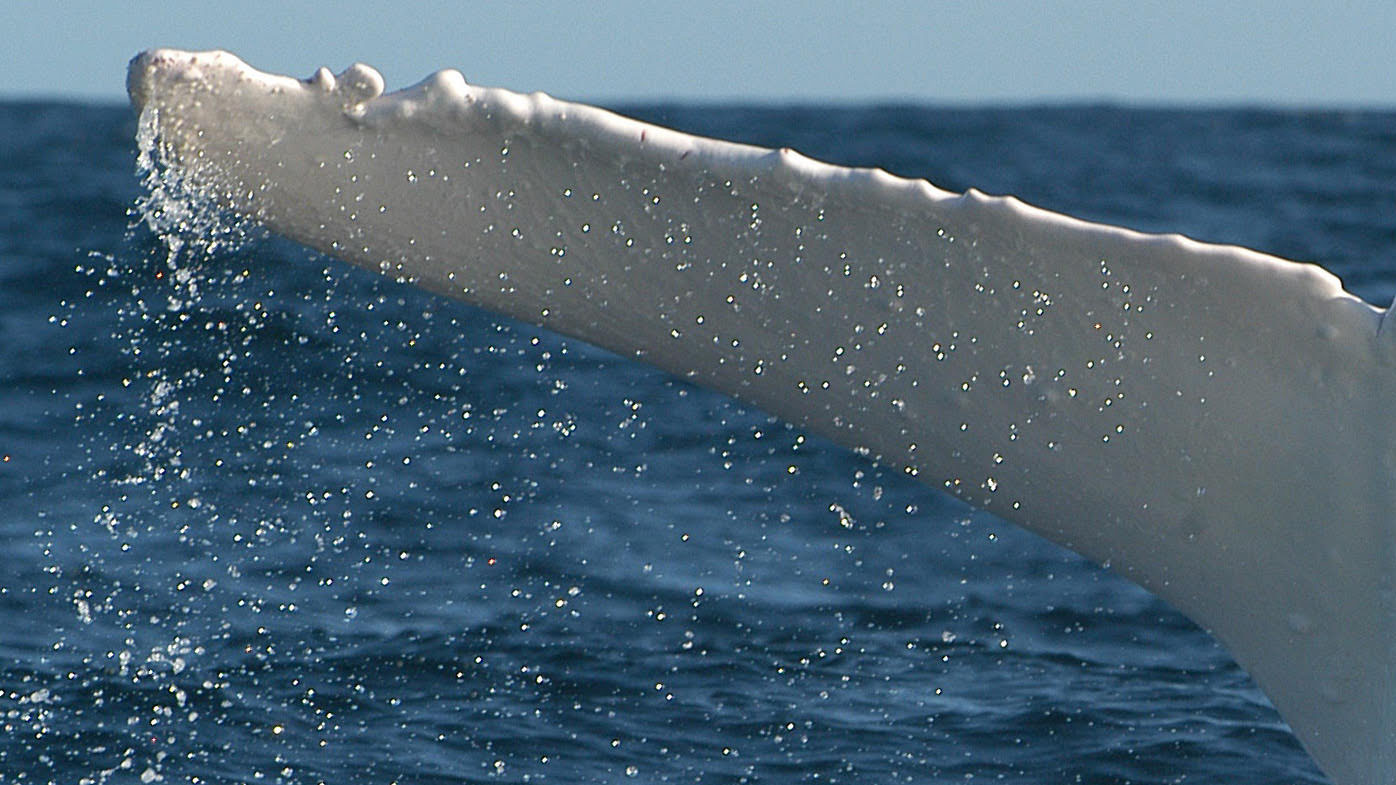Rare new vision of an all white humpback whale captured by a Queensland teen has sparked speculation Australia's beloved Migaloo may have reproduced.
Brayden Blake spotted the white whale about 500 metres off the coast of Fingal Head, while holidaying in New South Wales on Thursday.
The 16-year-old instantly thought of the famed whale Migaloo, who hasn't been seen yet this season, but marine expert Dr Wally Franklin thinks the "extremely intriguing" footage could indicate an even more impressive sight – a new albino white whale.
READ MORE: Climate change warning for Aussies
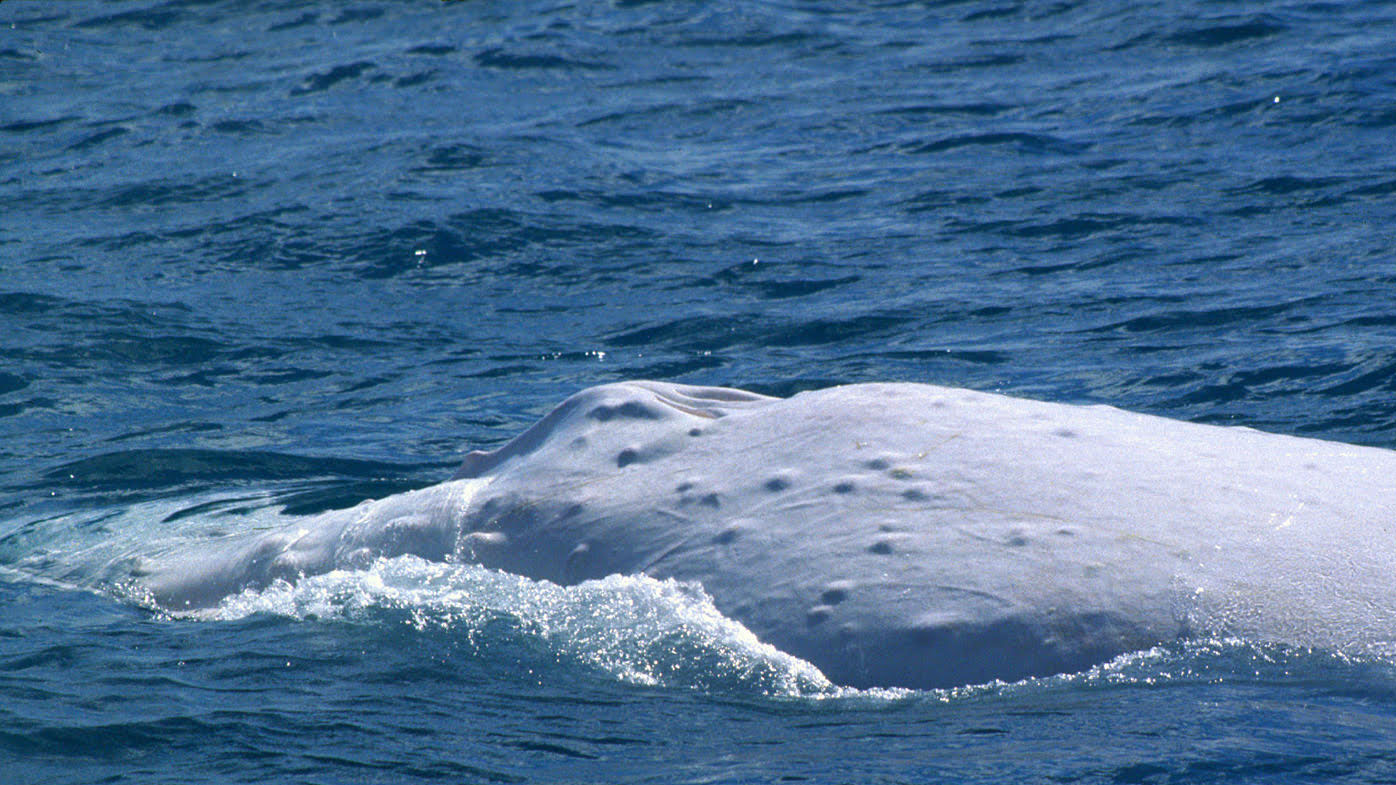
"If it is Migaloo, he's the only albino whale in the eastern Australian group, which now numbers over 40,000 whales and if it's a younger white whale, that'd only be two out of 40,000," Dr Franklin told 9News.com.au.
"So it's an incredibly rare occurrence.
"This is the first time that I've been able to say that the white whale I'm looking at could be a white whale other than Migaloo."
Brayden does drone shark surveillance for Surf Live Saving NSW and couldn't believe his eyes when he saw a white whale splashing in the water.
READ MORE: Vladimir Putin 'claims victory' in key city
He raced home to grab his personal drone to nab some footage, which has led to the potentially new discovery being pursued by experts.
"My heart was racing … it was just really, really cool," Brayden told 9New.com.au.
"I was so lucky to see it."
The whale can be seen frolicking with a pod of dolphins in footage exclusively obtained by 9News.
Dr Franklin said there is a strong chance this white whale may follow in Migaloo's footsteps and show up in Queensland's Hervey Bay, as Migaloo did in 1992.
EXPLAINED: What will and won't be open on Anzac Day
'Distinctive' markings used as 'fingerprint' to identify whales
While Dr Franklin believes the new discovery is remarkable, he said at this stage "we are not close enough to affirm the individuality of the whale".
However, he said there are several things that indicate the whale is not Migaloo and instead a potential offspring.
One hint could be the timing of this sighting as younger whales are believed to begin their migration from Antarctica to Queensland before older ones.
"The timing of the sighting is consistent with it being a younger whale, because it's still very early in the season," Dr Franklin said.
READ MORE: Convicted rapist named formal suspect in Madeleine McCann case
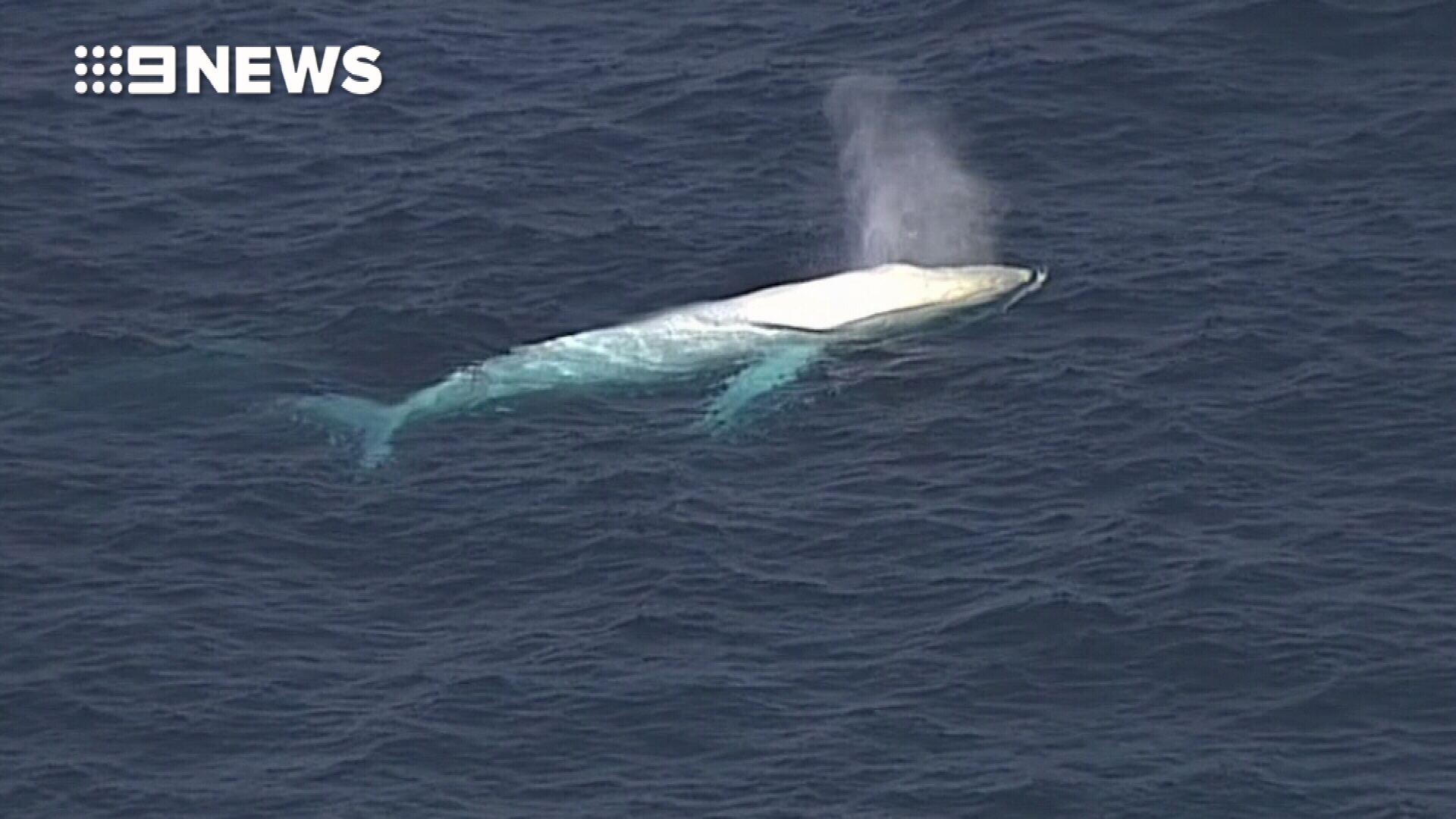
He said normally Migaloo turns up in late June, early July.
"He's been very consistent with those initial sightings so that could be a good indication that this might be a second white whale, which in itself would be quite incredible," the marine scientist said.
Dr Franklin has been able to identify Migaloo from photographs of his dorsal fin, "which has quite a distinctive shape".
"Along the backbone of the humpback whale, the knobs of the backbone do often show," he said.
"In in the case of Migaloo, he has two distinctive knobs on his backbone, relative to the dorsal.
"You've got to be able to photograph the dorsal on the back, which you can get because he does tend to flick up when he rises up out of the water."
"The trailing edge of his flute has a very distinctive shape as well because humpback whales have a serrated edge to their tale flute and that's quite unique.
"Humpbacks are the only whale out of the 80 odd species that have a serrated edge."
"It is like a fingerprint."
The new vision comes as major news to experts and Migaloo fans abroad, with Dr Franklin believing there to be more opportunities this whale watching season for people to view the spectacular animal.
"There will be opportunities for other people to sight him, possibly photograph him."
However, due to the hype that came about when the famous white Migaloo was first spotted in 1991, the Queensland government implemented legislation which aimed to protect him and any whale of his kind.
Queensland law requires that Migaloo, or any white whale, be given 500 meters of space under a Special Management Declaration.
READ MORE: Chinese president delivers cryptic messages in rare speech
Who is Migaloo?
The all white was first pictured on June 28, 1991 passing Byron Bay.
The indigenous community in Queensland used the world "migaloo" to describe a "white fella" – sparking the name that's now been heard around the world.
At the time he was the only documented all-white whale on the planet.
Skin samples were collected from Migaloo in 2004, which allowed researchers from Southern Cross University Whale Research Centre to confirm he is a male bornin 1986.
He's been sighted along the east coast of Australia with another whale known as Milo, which provided "valuable insight into the migratory behaviour of humpback whales" along Australia's coast.
Source: 9News

